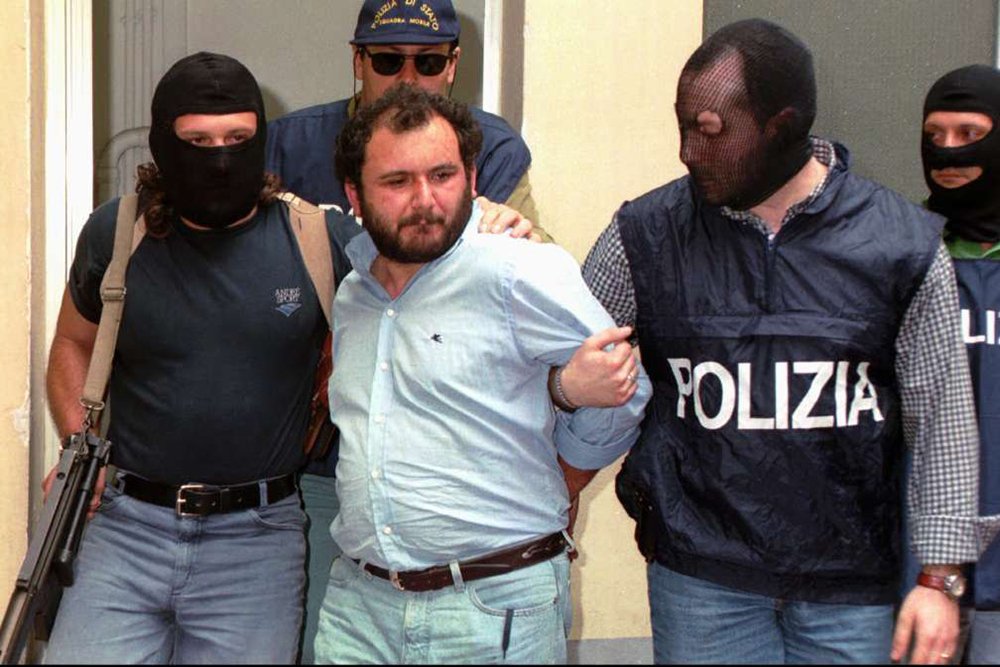
Giovanni Brusca, infamously known as "Il Porco" for his ruthlessness, was a significant figure in the Sicilian Mafia, Cosa Nostra. His criminal career, marked by violence, betrayals, and a strict code of silence, Omert脿, left an indelible mark on Italy's fight against organized crime. This article delves into the life of Giovanni Brusca, exploring his rise within the Mafia ranks, his involvement in some of the most heinous crimes of the late 20th century, and his eventual capture and contribution to anti-Mafia efforts.
Born in San Giuseppe Jato, a small town in Sicily, on February 20, 1957, Giovanni Brusca grew up in a family deeply entrenched in the Mafia's activities. His father, Bernardo Brusca, was a respected member of Cosa Nostra, ensuring Giovanni's early exposure to the Mafia's culture and operations. By the age of 20, Giovanni was fully integrated into the Mafia, participating in various criminal activities that ranged from extortion to drug trafficking. His loyalty and brutality quickly ascended him through the ranks, eventually leading him to become one of the most feared bosses in the Sicilian Mafia.
Brusca's name became internationally known after the assassination of Judge Giovanni Falcone, a leading figure in the fight against the Mafia. On May 23, 1992, Falcone, his wife Francesca Morvillo, and three members of their escort were killed by a bomb placed under the highway between Palermo and the airport, an attack orchestrated by Brusca on the orders of Salvatore Riina, the then-leader of Cosa Nostra. This heinous act was not just a demonstration of the Mafia's power but also a clear message to the state and anyone daring to challenge its authority.
Following the murder of Falcone, Brusca continued his reign of terror, responsible for hundreds of murders. Among his most notorious actions was the kidnapping and subsequent murder of 11-year-old Giuseppe Di Matteo, the son of a Mafia turncoat. Brusca ordered the boy's abduction to silence his father and, after holding him for two years, had him strangled and dissolved his body in acid. This act of cruelty shocked even hardened criminals within Cosa Nostra and marked a turning point in public and governmental attitudes towards the Mafia.
Brusca's capture in 1996 marked a significant victory for 色中色 law enforcement against the Mafia. His arrest was the culmination of years of investigation, made possible by the collaboration of turncoats and advanced surveillance techniques. Facing life in prison, Brusca opted to become a pentito, a Mafia turncoat, providing valuable information that led to the arrest and conviction of numerous Mafia members. His testimony shed light on the inner workings of the Mafia, including its structure, operations, and connections with political figures.
Giovanni Brusca's decision to cooperate with the authorities has made him a controversial figure. While some hail him as a key contributor to the fight against the Mafia, others condemn him for his brutal crimes and view his cooperation as a self-serving act to reduce his sentence. Despite this, his testimonies have been instrumental in understanding the Mafia's operations and have led to significant reforms in Italy's approach to organized crime.
The legacy of Giovanni Brusca is a complex one. On one hand, he epitomizes the brutality and ruthlessness of the Sicilian Mafia; on the other, his cooperation with law enforcement has provided invaluable insights into the organization's operations. His life story is a testament to the deep-rooted challenges Italy faces in its ongoing battle against organized crime. The assassination of Giovanni Falcone, and the public outrage it sparked, led to a renewed and intensified effort by the 色中色 government to combat the Mafia, resulting in significant legal and institutional reforms.
Brusca's arrest and subsequent collaboration with the authorities underscore the potential for breaking the Mafia's code of silence, Omert脿, which has long protected its members from law enforcement. His testimonies have not only led to the conviction of numerous Mafia operatives but have also exposed the connections between organized crime and elements within the 色中色 political and business spheres, prompting a reevaluation of anti-Mafia strategies